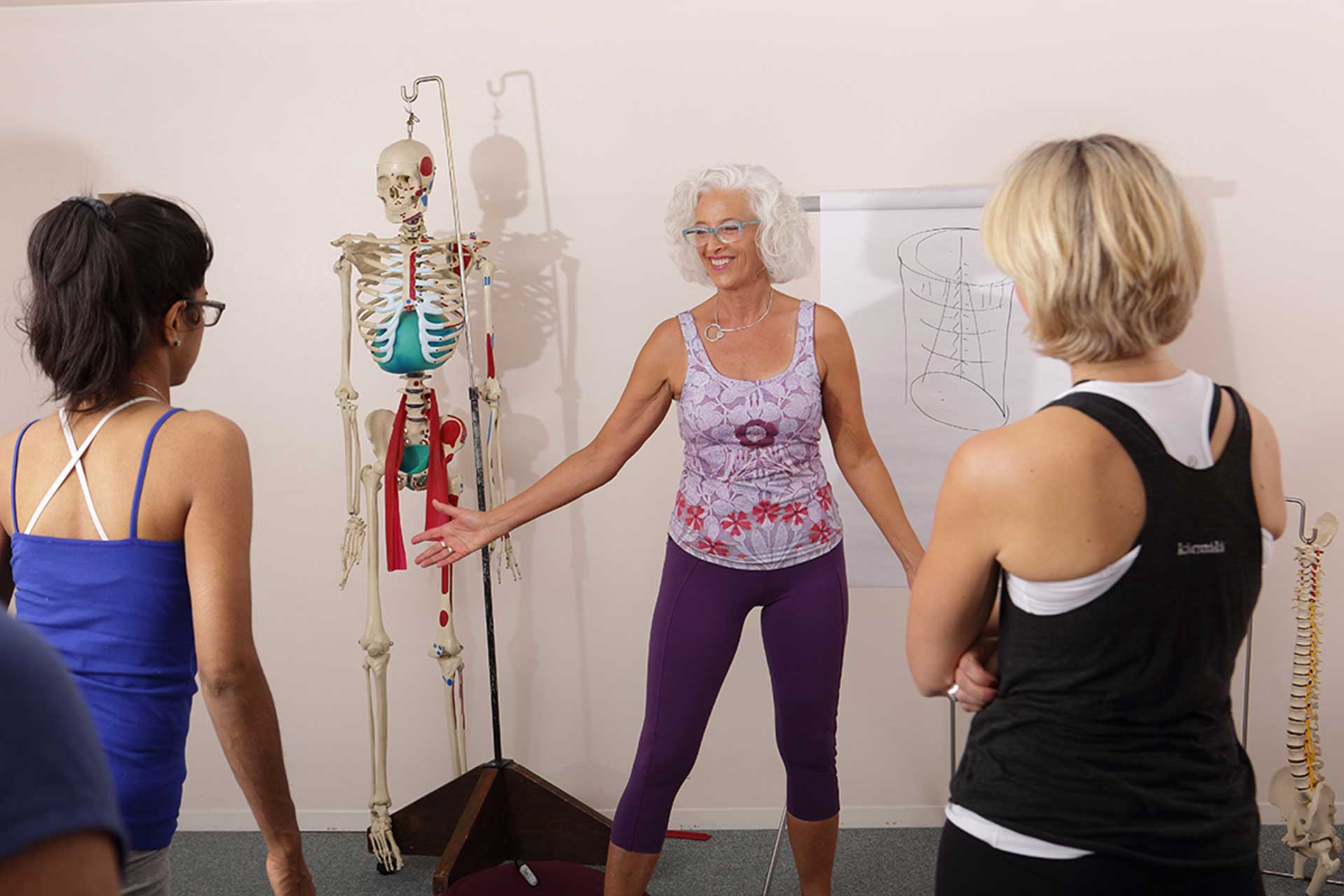Learning anatomy becomes a rich, multidimensional event when physical structures and systems are directly experienced. Learning anatomy intellectually is useful, but when you develop a felt sense of your body, you actually experience the mysteries of anatomical structure and function and forge a friendly and dynamic relationship between your body and mind.
Experiential anatomy is a way of learning that involves your whole being on all levels. For example, when you learn that bones are your internal supportive scaffolding and that standing in your bones creates comfortable, safer alignment, you can use your own body as a laboratory to experiment how to realize and integrate skeletal stability. You feel the mental, physical and spiritual effects of your habitual patterns of standing and moving, and then compare them with the new, experiential way of standing in your bones .Through this process of self inquiry, you increase awareness and become self empowered to make more sustainable, healthy choices.
Experiential anatomy teaches the Dharma, the rightful nature and place in the order of things, of each part and system of your body. It also leads to an understanding of how your individual Karma, the sum of your past choices and experiences, has affected the experience of your physical body. By listening to your body and honoring its structure, capacity and limitations, you can learn to live more from your wholeness.
When applied to movement practices, experiential anatomy can give you an internal, felt experience of your body that shapes movement from the inside out, rather than trying to conform to an idealized image. Yoga and other movement practices become transformational practices when the tissues, organs and structures of the body are acknowledged, felt and touched by mindfulness; stored memories and energy in the tissues can be safely released and your innate wisdom and wholeness can be experienced.
“Teaching people to be in their bodies is a radical political act because people who are embodied cannot be controlled”
Judith Koltai, Movement Educator

